Kelley had planned our day with a visit to the Natural History Museum London. The hiccup in her plan is that I woke up a little after midnight, after three hours sleep, and started on an all night writing session at the InterContinental Park Lane London. My night time company as Kelley slept were four double Stella Artois 660 ml bottles of beer. Looking out the window to the Four Seasons London across the street, my London beer buzz was enhanced with the room surroundings of art, marble and real paper books on the shelves, including Daniel Defoe Robinson Crusoe and Henry Fielding Tom Jones. A summer night in London in a luxury hotel and I felt like Owen Wilson’s character in my very own ‘Midnight in London’ version of Woody Allen’s movie.
Kelley woke me up at 11am, claiming she had been up for 2.5 hours waiting on me. She had sent the maid away. A quick trip to Piccolo Breakfast Bar for a couple of sandwiches and I was almost good to go. We were out the door by noon. Kelley was a trooper, walking 30 minutes through Hyde Park and Kensington Gardens to the museum.
Kelley has foot problems. She had two surgeries in the past decade to ease her foot pains. She did very well walking in Amsterdam in February, but Copenhagen the week before London was a different story. Back in 1997, Kelley claims I wrecked her feet in Ireland with long countryside walks and one infamous hike in Country Donegal she dubbed Loch ‘Blister’. Walking about 30 km in 48 hours resulted in our new word for hiking the Nordic cobblestones of Copenhagen. Kelley suffered in ‘Skin’dinavia. She proved to me that a multiple day bus pass for Copenhagen would have been cheaper than the cost of all the bandages she needed for her feet during our week in London. Bandaids are called ‘plasters’ in London.
An interesting public art project by Virginia Nimarkoh in Hyde Park are markers filled with data statistics regarding the Great Exhibition of 1851. This fair was kind of a forerunner to World Fairs and other international showcase exhibitions of the late 19th and early 20th centuries. The Great Exhibition’s purpose was to showcase technology, science, natural history and culture to the public. Exhibitions were a way to show industrial technology advancements and generate commercial deals with visitors who became buyers of industrial equipment and manufactured goods.
The Crystal Palace, designed by Joseph Paxton, was the world’s first large-scale prefabricated building. The Great Exhibition building was constructed in the Royal Park of Hyde Park, London as an immense, cavernous space made from cast iron and plate glass. The Crystal Palace was 1,851 feet long (564 meters), and 128 feet high (39 meters). I have seen three different widths published for the Crystal Palace from 108 feet to 454 feet wide. The plaque in Hyde Park states 108 feet.
Paxton’s glass house design, developed and submitted within two weeks, based the construction around 10 in. by 49 in. glass panes, the largest size available. The cast plate glass method was developed in 1848 and for the first time allowed the mass production of large sheets of glass. The Crystal Palace was the largest amount of glass ever used in a building up to that time. After the 1851 Great Exhibition, the Crystal Palace was moved to another location in London. The building burned down in 1936.
The Great Exhibition of the Works of Industry of All Nations & Crystal Palace Building Hyde Park 1851
- British Isles and Empire Exhibitors 7,381
- Foreign Exhibitors 6,556
- Number of Exhibits over 100,000
- Duration of Exhibition 5 1/2 months
- Visitors 6,039,205
- Cheapest ticket 1 shilling
Crystal Palace Building
- 700 tons of wrought iron
- 3,800 tons of cast iron
- 24 miles of wooden guttering
- over a mile of mahogany handrails
- 293,655 panes of glass
The Crystal Palace was constructed in five months.
The Great Exhibition of 1851 turned a profit of £186,000 or about $28 million USD in today’s money. The money was used for construction of the Victoria & Albert Museum, The Science Museum and The Natural History Museum.
Prince Albert died of typhoid fever in 1861, at the age of 42. The area of London with these museums is nicknamed ‘Albertopolis’ for the numerous institutions he was associated with founding. Royal Albert Hall is also in this area. The museums in Albertopolis are free admission public museums today and among the most visited museums in the world.
Near the museum district in Kensington Gardens is The Albert Memorial from 1872.
Natural History Museum London
Kelley and I walked through the museum looking for a toilet. Up escalators, down stairs and upstairs and down an elevator, exiting on a low level floor to find ourselves at the public toilets in the lunch room used by school children on field trips. There were an astounding number of British children on school field trips in July.
Finding my way to another toilet was not an option. Proactive thinking told me to set my backpack and camera on the floor. As expected, after a few minutes, a group of probably 9-year-old boys came into the bathroom and they rattled all the locked doors of the toilet stalls checking for an open stall. My camera was safely on the floor of the toilet stall and not hanging on the door.
The Natural History Museum London is the third most visited museum in the UK and one of the top 20 most visited museums in the world.
The main hall in the Alfred Waterhouse building of the Natural History Museum was opened in 1881. A large dinosaur skeleton, Diplodocus, fills the floor with its 26 meters head to tail length. The dinosaur is known as Dippy. This cast of Diplodocus was created for King Edward VII by Andrew Carnegie at his own expense after the king’s visit to the Carnegie Museum in Pittsburgh. Dippy is a replica of the Carnegie Museum dinosaur and was presented to the Natural History Museum in 1905.
The Victorian style architecture of the Waterhouse building fascinated me as much as the exhibits.
There are so many patterns and features of the walls and columns in the museum to admire. The walls are three dimensional.
The Natural History Museum London features geological, botanical and wildlife exhibits.
The museum was incredibly hot in mid-day in early July and we ended up cutting our visit short due to the heat inside the building. There were a couple of notable exhibits we saw before we fled the museum’s summer heat, school kids and selfie-sticks.
In the past year I have read museums are increasingly banning selfie-sticks. I never really had an opinion on the matter until our day at the Natural History Museum London. These women were taking selfies around the Giant Sequoia and made it difficult to pass by them or read the museum signs as they blocked the corridor space with their extended stick.
The Giant Sequoia cut-out in front of the women is from a tree felled in 1891. This was a year after Sequoia National Park was established in 1890 to protect the largest trees on earth in the Sierra Nevada range of California.
Charles Darwin statue – Natural History Museum, London
The crowds on a summer weekday were more than we expected for the Natural History Museum. It appeared that about half the visitors were school children on group tours.
Treasures in the Natural History Museum London
If you only have a little bit of time, one small room has Treasures of the Natural History Museum.
One of the fascinating exhibits was located in the Cadogan Gallery on the upper level of the Waterhouse building. This one small room with 22 exhibits houses some of the primary ‘Treasures’ of the museum. Our 30 minutes in this air conditioned room made the museum visit worthwhile, despite the insufferable heat in most of the building.
The Great Auk was a large flightless bird that once gathered in large colonies on islands of eastern Canada, Greenland, Iceland and Scotland. They gathered on land during breeding season and their slow movement on land made them easy prey for hunters. By 1775 a petition was presented to protect the birds from slaughter after Newfoundland colonies had been extirpated. The great auk was extinct by the mid-1850s.
The great auk is from Walter Rothschild’s Zoological Museum, now the Natural History Museum in Tring, UK (1889). This is the sister museum to the Natural History Museum. The Tring Museum is located on the former Rothschild family estate. Walter Rothschild (1868-1937) had a fascination with wildlife from an early age. His collection became so immense that his family built a museum to house his specimens. Upon his death in 1937, Rothschild left his collection of 2.5 million specimens and 30,000 books to the Natural History Museum. It is the largest single gift the museum received in its history.
Sir Hans Sloane (1660-1753)
Sloane’s collection formed the core of the British Museum when it was originally established in 1753. Sloane sold his collection of 71,000 objects, including 40,000 books to King George II for £20,000. The British Museum opened in 1759. The Natural History Museum was part of the British Museum until 1963.
Nautilus Shell from Sir Hans Sloane collection. One meter size page from John James Audobon’s The Birds of America, the world’s most expensive book. There are only about 120 complete copies of the four volume work worldwide. Museum of Natural History London has two copies. One is bound and the other is loose leaf. The museum rotates displayed pages in the Treasures exhibit. A complete bound set of Audobon’s four-volume work established a recent book value at auction, selling for more than £7 million ($10.5 million USD).
Between 1866 and 1889, the Natural History Museum purchased 185 Blaschka models, including sea anemones, octopuses, squid, jellyfishes, radiolarians, amoebas and corals. Leopold Blaschka and his son Rudolph created accurate models of sea creatures in their German workshop. Their techniques have never been reproduced.
Natural History Museum Blaschka Model in Cadogan Room.
Other exhibits included a 1st edition of Darwin’s Origin of the Species and the only moon rock in the UK.
One of the more reflective aspects of the exhibits was the space given to extinct wildlife.
This skull is from a North Africa Barbary lion who lived at the Tower of London in the 1300s. The Barbary lion of North Africa was declared extinct in 1922.
The Dodo bird were declared extinct in 1688.
The Natural History Museum London holds world treasures for the public. Even with a bit of a hangover, this museum was a worthwhile visit for me, if only to see a small portion of the treasures inside.


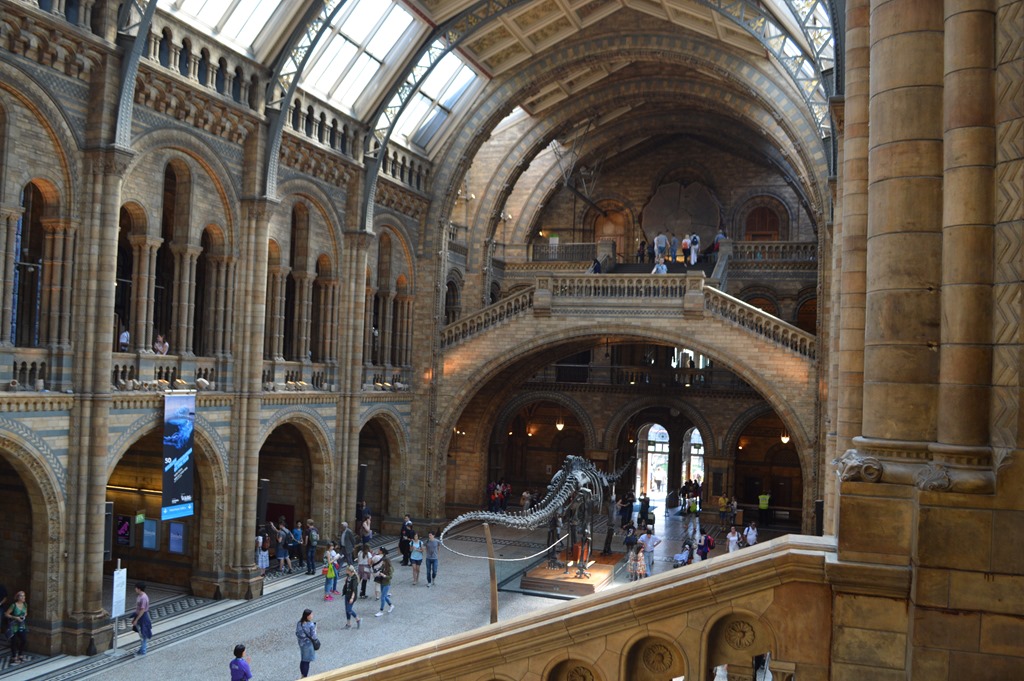


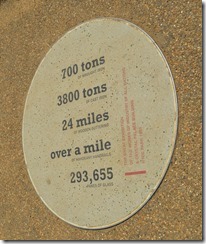
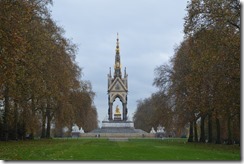
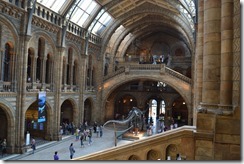
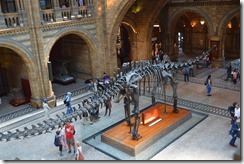
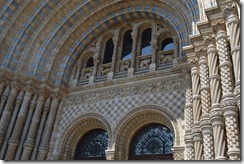
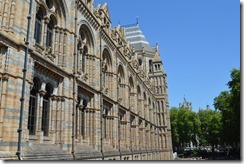
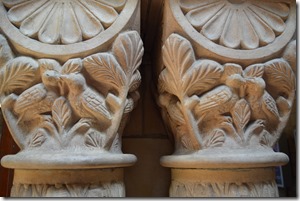
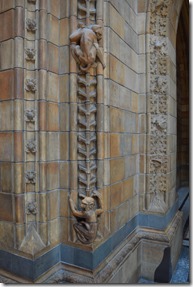
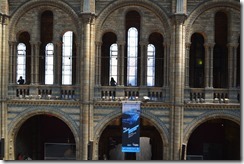
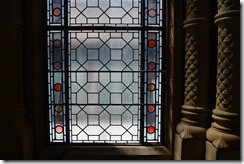
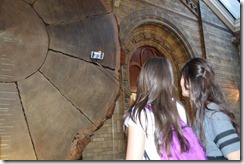
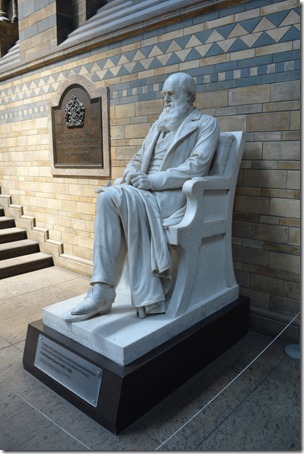

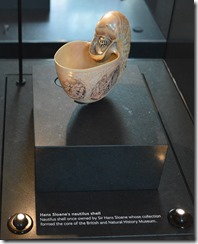

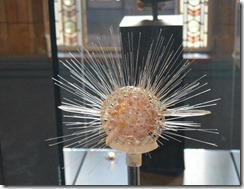
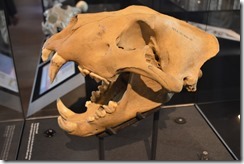
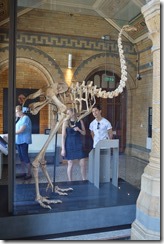

4 Comments
Comments are closed.